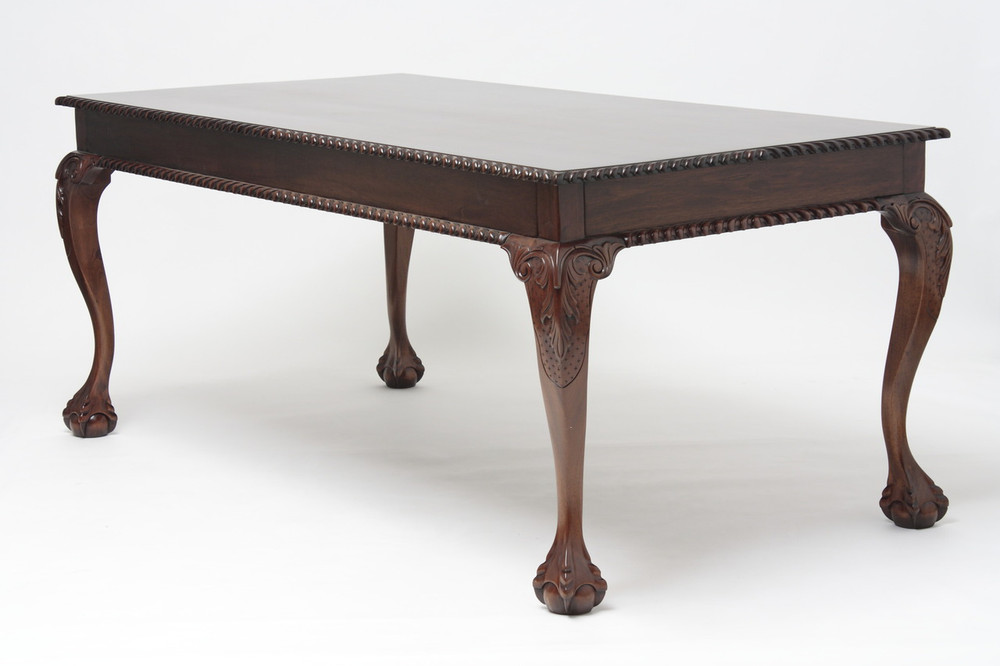- Home
- Learn About Antique Furniture and Reproductions
- Resources
- How to Tell an Antique from a Reproduction
How to Tell an Antique from a Reproduction

How to Tell an Antique from a Reproduction
The most important advice we can give to anyone that wants to determine whether a piece of furniture is actually antique or reproduced is if it looks too new, it probably is. Very few antiques are able to survive centuries without accumulating chips, cracks, discoloration, and other flaws along the way. Unfortunately, there are some sellers that will try to intentionally deceive customers by making a piece of furniture appear older than it is. Another tell-tale sign that a piece of furniture may be antique is its exclusivity. Reproductions are often mass-produced and they are plentiful at antique festivals and flea markets, which should be enough of a red flag to consider before making a big purchase.
Here are a few indicative details you can use to determine whether you have an antique or a reproduction.
Condition: As we mentioned before, genuine antiques will generally show signs of wear in areas that would naturally sustain the most contact. A patina, for example, is a thin layer that forms on the surface of metal and wooden furniture through dusting, polishing, and use. Wooden boards may be separated at the seam, or the drawer runners in an old dresser may show signs of being opened thousands of times. Some antiques may even smell musty or mildewed. You should also take a close look at the hardware to see whether it displays any legitimate signs of age.
Construction: Nothing produced more than a hundred years ago will be made with modern materials, such as fiberboard, staples, or Phillips-head screws. What's more, most antiques feature reinforced joints, such as dovetails, miters, mortises, and tendons, in addition to glue. If a piece is solely attached by glue, it is likely an antique reproduction. The same concerns may come up when you are appraising an upholstered chaise lounge. Synthetic materials were introduced as recently as the 1920s, and any upholstered piece produced prior to that would have been made with natural materials, such as horse hair, hay, or feathers. Fabric patterns also tended to follow trends of the day, so an upholstered piece that shows signs of wear and has an obsolete print may indicate that it is an authentic antique.
Wood: In the past, carpentry materials were difficult to obtain and furniture makers were less likely to use expensive wood in areas where no one would be able to see it. For this reason, many antiques were made with more than one type of wood. The species of wood used varied from one time period to the next, but the popularity of some species lasted several centuries. Mahogany, oak, pine, walnut, and rosewood are quite common, but you might also find pieces made of elm, maple, or sycamore. Reproductions are regularly made of the same material, from top to bottom. Additionally, genuine antiques are usually even and unsymmetrical. Carpenters of the past did not rely on machinery. In fact, many antique pieces feature carved details and minute imperfections that confirm the work was done by hand.
A Case for Antique Reproductions
Unlike the majority of reproductions you might find on your antiquing adventures, Laurel Crown's faithful reproductions are carefully carved, sanded, and finished by hand using only traditional construction techniques. We work almost exclusively with plantation-grown Honduran mahogany, which has been preferred by furniture makers throughout the last several centuries. Many of the antique reproductions we produce are also eligible for customization, so you can take the reins on designing an heirloom-quality piece of furniture that perfectly complements your home.
Knowing how to tell an antique from a reproduction does not happen overnight. However, you can arm yourself with knowledge and stay prepared for the next antique opportunity that comes your way. If you have any questions about this guide or would like to learn more about our collection of antique reproductions, please don't hesitate to contact us for additional information or further assistance.









